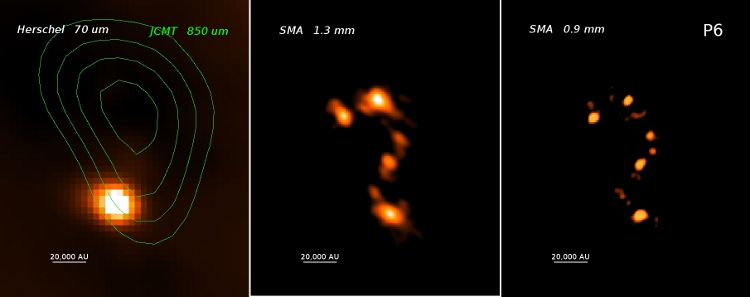| EPoS Contribution |
|
Fragmentation at the Earliest Phase of Massive Star Formation
Ke Wang ESO, Garching, DE | |
| How a parsec scale dense clump would collapse and fragment to give rise to a cluster that contains high-mass stars, when the Jeans mass of the patient clump is >10 times lower than the stellar mass? Through coordinated SMA and VLA observations, we peer into four massive (>103 Msun), low-luminosity (<103 Lsun) clumps in three infrared dark clouds, to investigate the early fragmentation. We find that fragmentation occurs in a hierarchical way, resulting structures from ~1 pc down to ~0.01 pc, and finally launch star formation at the smallest scale. At all scales, the fragmentation is governed by turbulence and/or magnetic fields. Majority of the smallest "star formation seeds" are not visible even in deep Herschel images obtained from the EPoS key project. These "seeds" together sample snapshots of physical and chemical properties along an evolutionary sequence. Our observations present the most in depth view so far for the earliest phase of massive star formation, reveal a sketchy picture from cloud clumps to star clusters, and place constraints to theoretical models. | |
 | |
| Caption: Hierarchical structures of the massive clump P6 in IRDC G11.11-0.12. For comparison, a deep Herschel 70 micron image obtained from the EPoS key project (Ragan et al. 2012) is shown on the left panel. SMA peered deep into the clump and revealed small "star formation seeds" that are not visible in the Herschel image. These seeds distribute in a question-mark shape which may reflect the original morphology of the parent clump where the seeds fragmented from. Spectral line features are different from seed to seed, indicating chemical differentiation along an evolutionary sequence. | |
| Collaborators: L. Testi, ESO, Germany Q. Zhang, CfA, USA F. van der Tak, SRON, The Netherlands |
Key publication
Suggested Sessions: Filaments |

